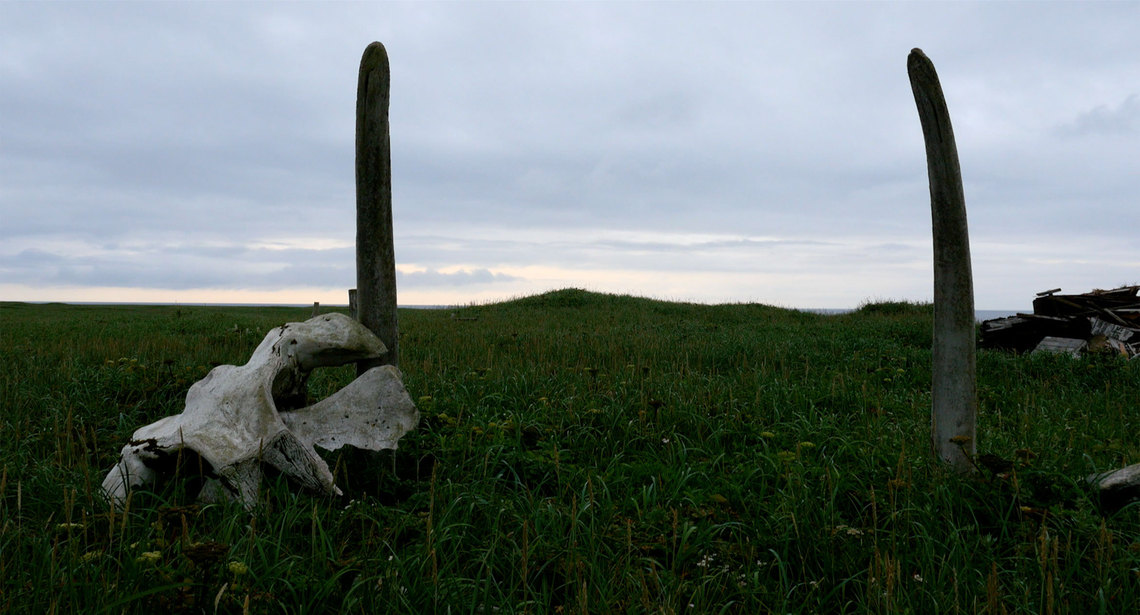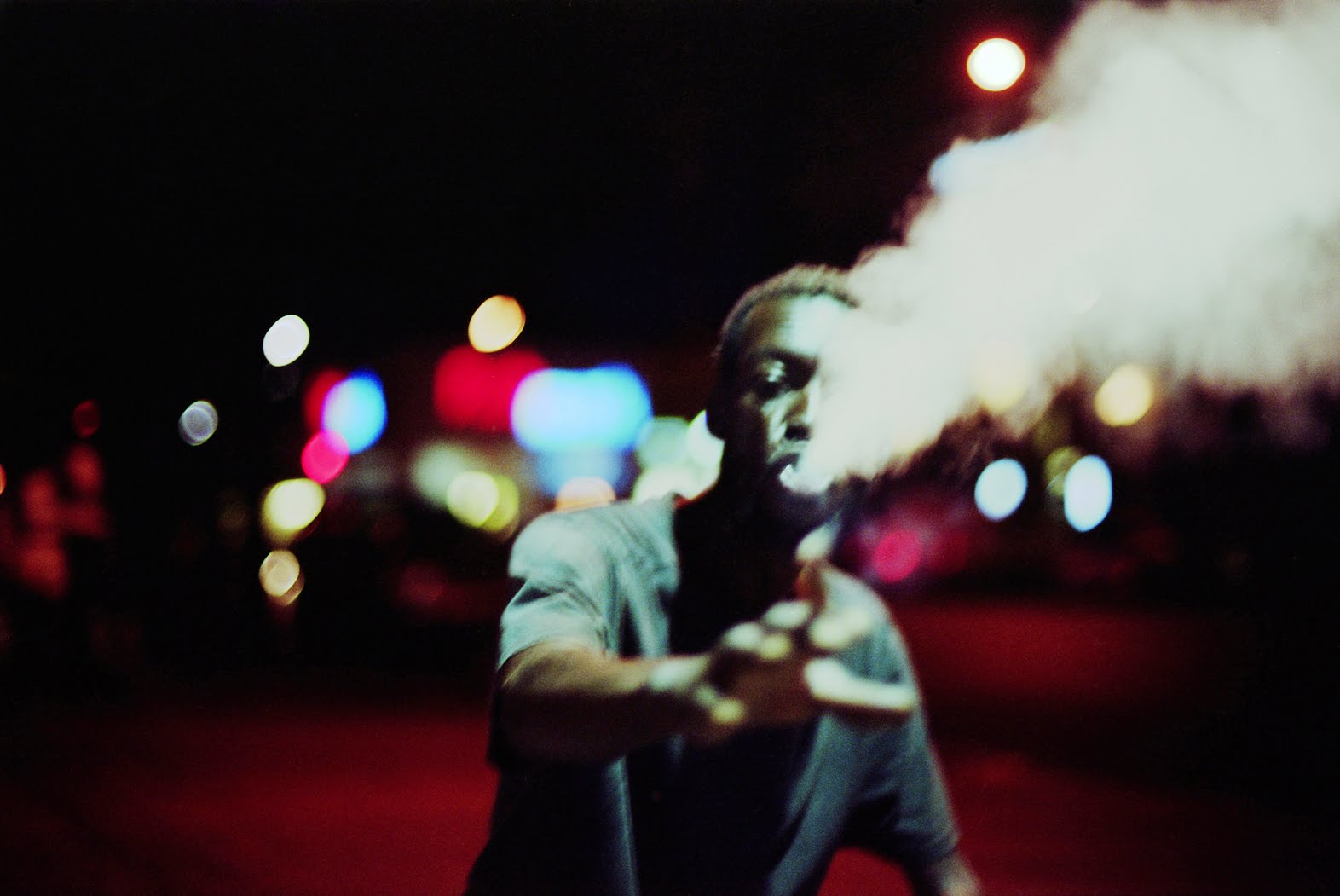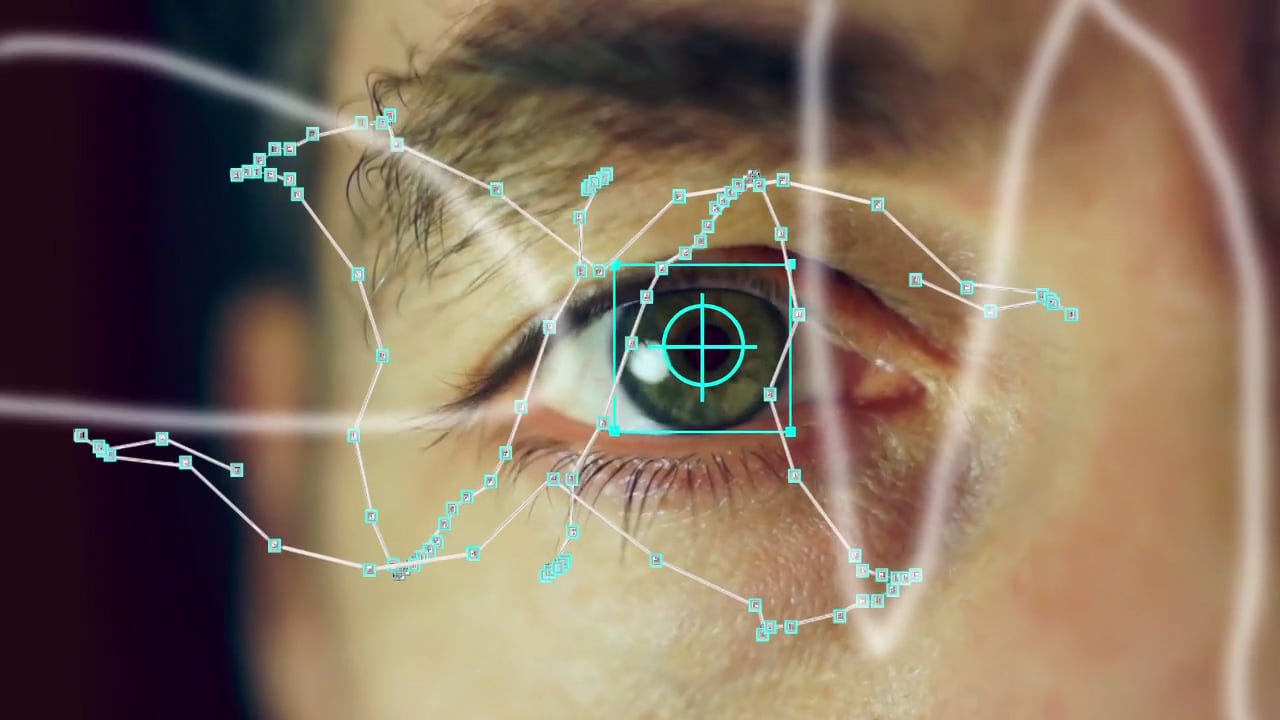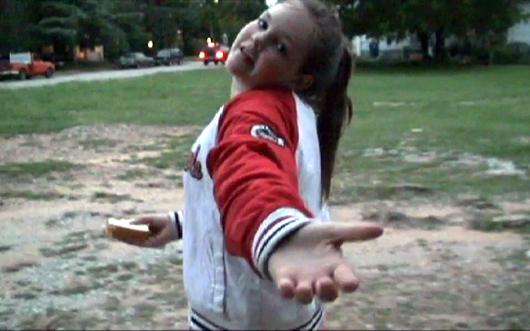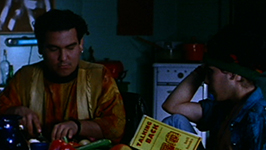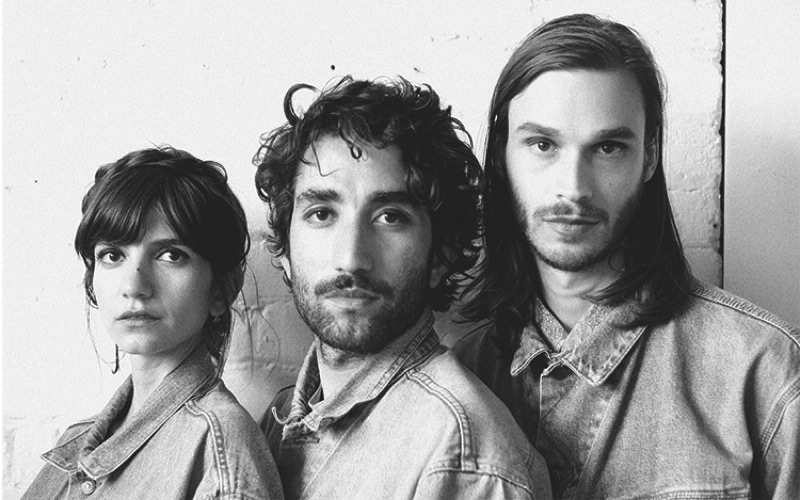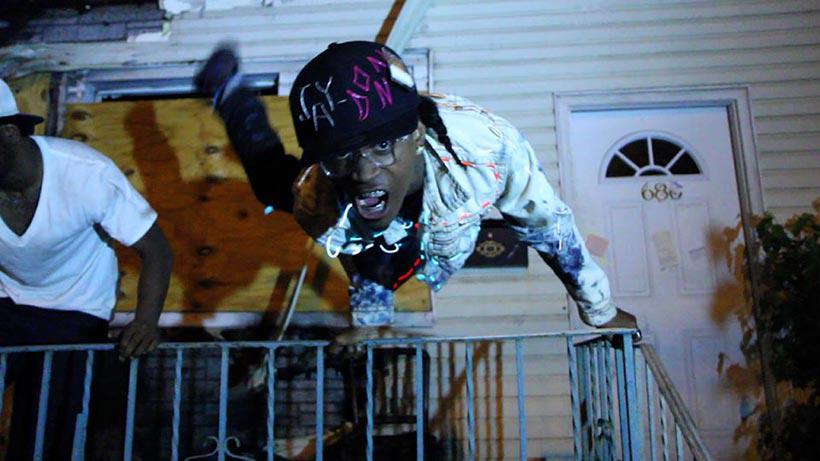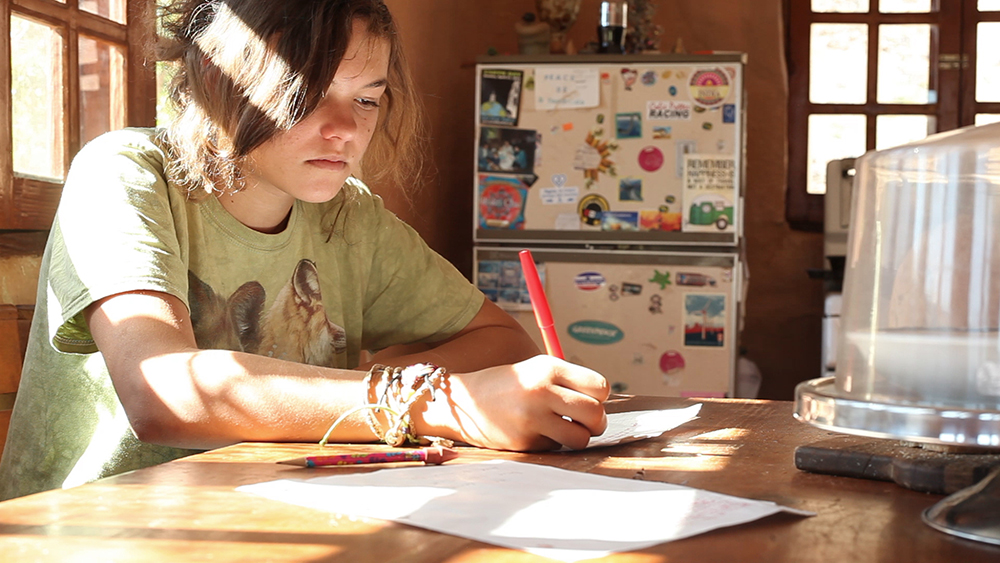Documentary New Wave: The Dirty Dozen
proposed for the Winnipeg Cinematheque, September 2016
1. The Prison in Twelve Landscapes by Brett Story (Canada) 90 minutes, 2016
2. Field Niggas by Khalik Allah (US) 60 minutes, 2014
3. Time Out of Joint by Caspar Stracke (Mexico, Finland, Germany) 85 minutes 2015
4. Craigslist Hook-ups meets Teenage Playground: Samira Elagoz and Eva Marie Rødbro (Egypt, Finland, Denmark)
5. Aboriginal Superheroes
(3 shorts by Sky Hopinka (US), plus shorts by: Caroline Monnet (Canada), Thirza Cuthand (Canada), Joao Vieira Torres and Tanawi Xukurú -Kariri (Brazil, France))
6. Kelly O’Brien: The Queen of Facebook (Canada)
7. Jorge Lozano: Notes from the Underworld (5 movie retrospective) (Canada-Columbia)
8. Madi Piller: Shock, Fear and Belief (9 movie retrospective) (Canada-Peru)
9. Home Movie Deliriums: The Body is Memory
(8 shorts by: Taravat Khalili, Dan Brown, Clint Enns, Izabella Pruska-Oldenhof, Christine Lucy Latimer, Lee D’Angelo, Leslie Supnet, Ryan Ferko, Parastoo Anoushahpour, Faraz Anoushapour) (Canada)
10. Grand Theft Auto Meets Michael Jackson
(3 shorts by Kevin Jerome Everson (US), 1 short by Loretta Fahrenholz (US))
11. End of the World Singalong
(2 X 30 minute shorts by: Dani Leventhal and Jared Buckhiester (US), Emily Vey Duke and Cooper Battersby (Canada-US)
12. Metube: Queer Utopias
(4 shorts by: Daniel Moshel (Germany), Allyson Mitchell and Deirdre Logue (Canada), Daniel McIntrye (Canada), Steve Reinke(US))
These twelve programs map out new documentary forms and pleasures. Mixing long-form docs (that look at black street culture, prison life, and backwards time) with shorts programs, the shows offer a bouquet of practices that have renewed both verité traditions and dramatic re-creations. Artists have torn up the playbook, often returning to the home movie in order to offer startling personal visions and rare intimacies. Social media creatures have turned Facebook and Craigslist into new production modes. Aboriginal splendours and black lives are at the forefront, as usual. A pair of South American-born artists are featured in solo spots: Jorge Lozano and Madi Piller. In place of talking heads there are newly performed selves rendered as impressionistic overloads or landscape suicides. Whether it’s the Special K smokers in Khalik Allah’s award-winning Field Niggas, or Marilyn Monroe taking a bow in Daniel McIntrye’s Famous Diamonds, these radiant pictures offer the luxurious joys of new encounters.
1. The Prison in Twelve Landscapes by Brett Story 90 min, 2016
Where have our prisons gone? Brett Story’s elegant twelve-step reply shows how America’s obsession with incarceration has woven itself deeply into the ongoing class war. Criss-crossing the United States, pausing long enough to examine yet another facet of the prison-industrial complex, though often with unexpected subjects and interfaces, the artist asks us to reappraise the scope and complexity of the disciplinary system. A portrait of eastern Kentucky, for instance, allows how the coal ran out for towns built on coal, and how prisons have become a new economic engine, “recession proof” because they can’t be outsourced overseas. In Marin County an ex-con narrates her all-woman firefighting team over stunning vistas of fiery destruction. Her voice carries a tough fragility, perhaps this is the cost of surviving, or living with a past that can’t be easily shelved. In the Bronx, a store opens manned by an ex-con filled with prison-ready goods. He knows how much a package of raisons has to weigh, that nuts must be delivered without shells, that the buckle on a belt needs to be 1.5” or less, boxer shorts have to be white, and with a particular kind of elastic. In Los Angeles pocket parks are built after a city bylaw requires that sex offenders not be able to live within 2000’ of a park. Interviews outside the St. Louis County Courthouse reveal a black population systemically targeted by an apartheid system designed to extract money, and punish citizens for the colour of their skin, even for simply living in their neighbourhood. A devastating indictment of the carceral state, Brett Story’s film delivers a systemic analysis that is delivered with an impressionistic beauty and space enough to read between the lines. This movie takes no prisoners.
2. Field Niggas by Khalik Allah 60 minutes, 2014
“An hour-long Harlem nocturne of near-hallucinatory intensity, Khalik Allah’s provocatively-titled Field Niggas seeks to give a voice to the voiceless and a face to the faceless… The junction of 125th Street and Lexington has long been known as one of the most dangerous corners of New York, and is the spot where heroin is scored in The Velvet Underground’s 1966 classic ‘I’m Waiting For the Man.’ As a poetic dispatch from society’s lower depths, Field Niggas is an oblique but inescapably topical slice of slick but rough-edged humanism — a polyphonic roundelay that hits some powerfully discordant notes…” Hollywood Reporter
“With vast empathy and spontaneous imagination, the director Khalik Allah revitalizes the genre of the observational documentary and transforms several simple technical tricks into a vision of the world. Filming in the summer of 2014 at and near the corner of 125th Street and Lexington Avenue, videotaping and interviewing people who hang out there—most of them black, many drug addicted, some homeless, some discussing their prison time—Allah, doing his own handheld cinematography, presents his subjects in a dreamlike slow motion that turns video into a fluid transfiguration of painted portraiture… The result is an intimate movie with a metaphysical grandeur, a detailed local inquiry that displays the crushing power of societal forces as well as the passion and vitality of those who endure.” Richard Brody, New Yorker
3. time/OUT OF JOINT by Caspar Stracke 85 minutes 2015
A maximalist freefall into the world of time reversal via science and art. Stracke’s delirious visual inventions propel this cross-cutting essay doc that replays backwards birthing, the supposedly Satanic verses from Led Zep records played backwards, and Japan’s famous Tsukiji fish market. Twelve years in the making, the artist brings his roots as an experimental filmmaker fully into the digital realm, producing inventive and playful procedures for information processing. His musical inclinations are everywhere present, this is a movie that is composed and de-composed, sliding between hi-tech science labs and countryside ruminations on mortality with an internationalist’s ease.
The subject of time is particularly well suited to the film medium, where time is an essential and plastic element, it can be stretched or compressed, and reaching deep into his experimentalist’s trick bag, the artist offers us astonishing views of city streets rolling backwards, or unbirths, or hypnagogic forests. These alternate with performative turns where a street hawker sells his ability to say anything backwards, or scientists geek out on light demos, or else the movie maker himself tosses his weighty time books into a stream, and then follows them into the drink like a modern day Chaplin.
“Is it actually possible to have time go backwards? See for yourself with a film that Martin Heidegger and Gyro Gearloose could have made together.” (cph dox) The global all-star cast includes punk super 8 icon turned philosopher Manuel DeLanda, Marxist philosopher Agnes Heller, experimental filmmakers Alexander Galeta and Narcisa Hirsch, BioTime researcher Michael West, atomic physicist Mikhail Lukin (Harvard), bioenterologist Aubrey DeGrey (Cambridge), biologist Stephen Spindler, particle researcher John D. Cramer and NY choreographer Sara Rudner.
4. Craigslist Hook-ups meets Teenage Playground: Samira Elagoz and Eva Marie Rødbro
A pair of young video queens revive the verité portrait in their frank ethnographic encounters. Elagoz (Egyptian-Finnish) finds her male subjects via Craigslist ads, she steps into the unknown armed with her camera and her youth. Rodbro’s subjects include a trailer clan in Brownwood, Texas and disaffected Greenlanders and Copenhagen beauty spots. Her casually elegant frames and empathetic montage opens every face.
The Ukranian by Samira Elagoz 5 minutes 2014
“I contacted strangers to take part in my film. In the end one said yes. I spent two nights at his place with the camera.” Two strangers meet in his apartment, she arrives with her camera rolling. “You be prepared, next time I kill you,” he says. Her response. “Hmm?” Muscular, angry, sexy, the two of them say hello with their whole bodies and then they never see each other again. Another foray into personal ethnography.
Four Kings by Samira Elagoz 25 minutes
A suite of four interlocking portraits of men who answer Samira’s Craiglist ad. Beautifully and carefully photographed, with a disaffecting casualness, the artist brings us close to a quartet of camera suitors that she names as archetypes.
*
Fuck You Kiss Me by Eva Marie Rødbro 6 minutes 2008
Rodbro visited Greenland twice in 2008 to create a suite of pictures and gather footage for this lyrical short. She stayed for a month each time, and it shows in the intimacy of these portraits. She catches the lonely child struggling out of his snowsuit, and rhymes his movements with the snowdrifts smothering every sign of the past. A procession of dream teenagers float past, while a dog, apparently the only life still singing outside, moves until we can see the long chain holding it down. What is the cost of living in this place, of standing on this ground, saying yes to this family?
Dan Mark 29 minutes 2014
Shot in Copenhagen during a sunny July in 2014, this portrait of Dan follows him at a swimming hole, begging for his father’s attention, visiting the grandparents, hanging out with a younger pal, bbq’ing hot dogs on the street. The filmmaker keeps Dan close in her steady and persistent frames, accompanying the action.
I Touched Her Legs by Eva Marie Rødbro 15 minutes 2010
Rodbro’s casual masterpiece takes place in Brownwood, Texas as she hangs out with the late-night stoners and after hours crew. Whether necking, laying out in their own beds, smoking heaters or driving through the last night of the world, her subjects seem fully at ease, and Rodbro jolts us across these intimacies with an epileptic’s passion that brings together humans and animals.
5. Aboriginal Superheroes
Toré by Joao Vieira Torres and Tanawi Xukurú-Kariri 15 minutes 2015
Mobilize by Caroline Monnet 3 minutes 2015
You are a Lesbian Vampire by Thirza Cuthand 3 minutes 2008
I’ll Remember You as You Were, Not as What You’ll Become by Sky Hopinka 12:30 2016
Jaaji Approx. by Sky Hopinka 7:36 minutes 2015
Visions of an Island by Sky Hopinka 15 minutes 2016
Toré by Joao Vieira Torres and Tanawi Xukurú -Kariri 15 minutes 2015
Set in Alagoas, Brazil, in the aboriginal community of the Xucuru-Kariri, a young boy watches Disney’s Fantasia (1940) as the camera absorbs his reaction shot. The music (Fantasia was the first stereo film ever released) continues to play as the picture floats out into the surrounding landscape, lending everything an otherworldly air. The images lean into frames of pure colour, miming Disney’s coloured extravaganza, which were in turn inspired by the colour abstractions of Len Lye’s A Colour Box (1935). The boy’s viewing is interrupted by feeding habits and the family’s dailiness, until a tribal ritual summons him, where the body becomes a different kind of canvas, and each subject is drawn to a group circle of new understandings.
Mobilize by Caroline Monnet 3 minutes 2015
An exhilarating rush of a trip, the artist mobilizes the archives of the National Film Board in order to produce a trek from Canada’s northern reaches to the cities in the south. Every shot is a wonder, as Monnet reframes the archive with an aboriginal lens, allowing snowshoers, paddlers, strollers and iron walkers to cross the new screen of the eye. The score is by Polaris winner Tanja Tagaq.
You are a Lesbian Vampire by Thirza Cuthand 3 minutes 2008
This voice-over driven hilarity is a minimalist noir, with a pair of make-out queens in the spotlight, as the black and white pictures dissolve into a crimson tide. The love, the deadly attraction, the terminal kiss, it all feels irresistible. While this is the oldest movie in the program, but what could be newer than a voice from hundreds of years ago, hot on a new crush?
I’ll Remember You as You Were, Not as What You’ll Become by Sky Hopinka 12:30 2016
A memorial and celebration of the late, indigenous, lower-east-side poet Diane Burns who sent up Native stereotypes in her sharply irreverent lines. A chorus of dreamy, colour-transfigured dancers fill the screen with joy. Solemn lights animate the forest. “No I didn’t make it rain tonight.” Conjurings of extinction as the car races into a magic hour sunset. The poet appears onstage, tapping the mic in a rhythm of yes. Hopinka reconnects Burns with the land, where everything is alive, singing, turning, lighting up, not yet sunken into the bottle, her lost child waiting, waiting. Here is the dream future, the road not taken, an offering of thanks from one artist to another.
Jáaji Approx. by Sky Hopinka 7:36 minutes 2015
Notes from father to daughter, a generational message, written on the land, in the old tunes, the new fires. There is a song that is clear and tough enough to be heard across generations, and her father sings it here. At night the lines turn on and off and the trucks pass, like everything. “Jáaji is a near translation for directly addressing a father in the Hočak language.”
Visions of an Island by Sky Hopinka 15 minutes 2016
There is an island on the Bering Sea, between Russia and Alaska. Could it be imagined outside of language, and what does it mean if that language is indigenous, and in danger of disappearing? If the words go, does the geography follow? An Unangam Tunuu elder maps out the wildlife and terrain. Students roll the old words over their tongues. In a series of spendidly coloured frames and clear lookings, the artist grazes the land until it turns upside down. Who belongs here? The concentration, the gravity of each footfall, lends the artist’s seeing an uncanny intensity, every frame burns with resolve and a prenatural certainty.
6. Kelly O’Brien: The Queen of Facebook (60 minute performance)
For most people Facebook is an addictive distraction or sideshow diversion. For Kelly O’Brien, it is the place where she makes her art. After her second child Teddy was born with severe disabilities, her life as a TV producer came to an end, she needed to be home to look after him. This might have meant an end to her artmaking. But with typical ingenuity, she began forging stunning portraits of her life at home, and accompanied them with thoughtful, heart wrenching texts, often tossing in a choice bit from large-brained contemporaries. She has started to take her show on the road, projecting her instagrams while she dishes the text. It is the most heartbreaking, captivating and necessary fringe moment of the past year.
7. Jorge Lozano: Notes from the Underworld
Tampon Thieves 22 minutes 1998
Black Box 5 minutes 2006
Death Match 6 minutes 2010
CloroX 5 minutes 2014
Underscore (_) Subguión 28 minutes 2012
Jorge Lozano is the maker of over 100 movies, a treasure of the international movie scene, his restless visual inventions emerge from a period of super 8 activism and personal video interludes. In the past dozen years he has divided his time between his former home of Colombia and Toronto, which has lent his work a renewed political focus along with a keen aesthetic wit. He is forever translating his thoughts and encounters into media moments, deeply concerned with the art of asking questions. Why this gender? Why this desire, this neighbourhood, this poverty? This program opens with his bravura short drama Tampon Thieves, featuring a pair of sex workers and their queer pals. This is followed by the materialist adventure of Black Box, the intimate portrait of a sick cousin in Death Match, a three-way love affair in CloroX, and finally a devastating survivor’s testimony from an assassination attempt. While Jorge’s work returns to the class struggle, the invisible and oppressed, he wraps it all in layers of visual invention and joyful uncoverings.
Tampon Thieves 22 minutes 1998
One of the finest Canadian short dramas of the 90s follows a pair of sex line operators with mother issues whose constellation of gender-ambiguous queer pals soften the load. With nods to New York’s no-wave filmmaking this beautifully lit and shot essayistic melodrama takes us from home to the bar where a drag queen dishes Fever in a delirious double-take. The camera caresses every surface, the set is luxurious and the acting never less than convincing. The queer personality construction sites and razor blade politics underlying the relational back and forths make this movie as relevant as ever.
Black Box 5 minutes 2006
A brief quotation from Shakespeare’s The Tempest (“be not afeard”) begins this walk through time and space, before the movie’s title there is already a sentencing, a text that brings judgments, openings and closings. The movie pictures a deluge of memory, strolling through the architectures of the self, and the buildings that housed those selves, all in a flickering cascade of hand-developed pictures. The artist’s body, particularly his sandaled feet and sunglassed face, act as the anchor for the visual cascade. He is trying to hold a balance between past and future as he is pictured walking backwards, into a history of emulsion and projections and the ruined machines that must be left behind.
Death Match 6 minutes 2010
The artist’s camera lingers on the misshapen body of his cousin, who offers his aberrant wrist bones, the patchwork his body has become as it tries to accommodate his chronic renal (kidney) failure. The shrinking veins in his arm had to be opened via prosthesis so that he could take needles. A long shot, in which the subject’s face is withheld, his dignity intact, shows him attached to the machine that cleans his blood three times a week. He has become a cyborg of memory and tubes. In the end he stands against a wall naked, his thin frail body makes him look very nearly like a child, though on the soundtrack he recounts the many friends who have already died. “We look at death in a different way than normal people. For us death is something natural, something very beautiful, something that comes to some earlier, and others later, but we must accept and live with it.” As the credits appear a moment from his metal band Death Match sounds out, angry enough to leave marks in the sidewalk.
CloroX 5 minutes 2014
Made on a flight from Canada to Colombia, the artist offers a ménage a trois, a three-screen affair whose backdrop is a universe of clouds. Inside the plane, dreamers slump in hazy deliriums of light. And between the pictures on display, above and below them, texts are exchanged between lovers. There has been an affair, another man has come between the two of them, but now new vows of fidelity are exchanged. The path will be cleaned. The onscreen text derives, astonishingly, from a found email.
Underscore (_) Subguión 28 minutes 2012
A staggering double-screen confessional by an unnamed acquaintance of the artist, going on the record to speak about his near death after a roadway assassination attempt. In a smooth and certain voice, he talks about meeting with the mayor, his final preparations, and his leavetaking, where he tries to outrace his murderers. He survives the first attempt, and then rallies armed pals as he lies on the stretcher in the hospital’s emergency room, clutching a gun. The artist blanks out every name and locational reference, to protect his subject, who remains in hiding, after many years of living underground he emigrated to Canada. An abstract cipher plays alongside him, as if he were giving voice to the many who were not lucky enough to leave the playground and bear witness.
8. Madi Piller: Shock, Fear and Belief
Shakira video 1 minute video 1981
Animated Self-Portraits 9 minutes 2012
Chambre de Torture: 1944 2.5 minutes 2003
7200 Frames Under The Sun 3.5 minutes 2011
Anonymous, 1855 1.5 minutes 2005
Bacchanal 15 minutes silent 2014
Untitled, 1925 Part three 8 minutes 2016
Untitled, 1925 Part two 8:45 minutes 2016
Untitled, 1925 Part one 7 minutes 2016
Madi Piller has worked diligently and with a great appetite for the past fifteen years, working up her hybrid chops, mixmastering a rigorous, emulsion-based formalism with a commitment to process and the joys of seeing. She was one of the first super 8 filmmakers in Colombia, and tonight’s program will open with a glimpse of her earliest work, and the phenom who called herself Shakira. When Madi moved to Canada she raised the flag for animation. She made a run of shorts that offer sometimes harrowing political recollections, carefully reworked, run through generations of frame-by-frame laser printings or else hand-painted frames, shuttling between film formats, working to find the feeling tone of recollection. The centerpiece of this retrospective is her new trilogy, a landscape of memory shot in her native Peru, where she reanimates the grounds of her seeing in a materialist rapture.
Shakira video 1 minute video 1981
Shot on super 8, this was the first commercial made in super 8 in Columbia. The artist was visiting her twin sister in Canada and started shooting super 8, processing at Exclusive, and then heard about the Splice This! Super 8 festival. When she returned to Columbia and continued shooting super 8 it proved contagious, and many others followed. From 1983-89 Madi worked in an advertising agency producing hundreds of shorts each year. This one was made about budding pop sensation Shakira.
Animated Self-Portraits 9 minutes 2012
A bravura community portrait that began with a request. The artists asked 83 animators for ten self-portrait drawings that she would animate. The result is an encyclopedia of animation techniques, a gleeful expression of kinship and outsider expressions, the long and laborious hours suddenly turned into a choir that says yes.
Chambre de Torture: 1944 2.5 minutes 2003 (16mm)
Based on the filmmaker’s father, this movie allegorically replays his experience in wartime France. Opening with a playful animated abstraction, three dots converse as if they were children playing in the yard. These dots dissolve into a nightmare forest, filled with animated gunshots and looming spectres. As a Jewish teenager, Madi’s father went into hiding in Strasbourg. When the war ended, he entered the building that he had watched German soldiers entering and exiting from his hideaway. He found a room there with hooks in the ceiling, and layers of blood covering the walls. Years later, in the 1980s, his father announced that he was going to start painting again, and he drew exactly this scene, a memory haunting that appears in the movie.
7200 Frames Under The Sun 3.5 minutes 2011
The film is composed of two super 8 films, each 50ft, edited in camera. One film animates the landscape with methodical and incremental movements that flash rapidly changing images, offering the flora of northern Ontario. The second film focuses a lingering lens on outcroppings of solid rock exposing fossil-like imagery and sensual shapes that visually insinuate their primal connection to the advance and retreat of the glaciers that were central to their formation. An intriguing soundtrack of experimental music, composed by John Halfpenny, pulsates throughout with a reverberating fusion of dense electronic tones, including some that bring to mind the sound of whales, which might be interpreted as a reminder that the shield was once completely submerged under ancient waters.
Anonymous, 1855 1.5 minutes 2005 video
Photographs of nineteenth century couples involved in mutual masturbation and spanking are subject to minimal animated reveries. The whole frame quivers with old pleasures while isolated body fragments are set into motion. Each vignette opens and closes with an iris, each inviting its viewers to engage in one of the oldest sexual pleasures: the act of looking.
Bacchanal 15 minutes silent 2014 super 8
The filmmaker announces: “It’s about music and asses.” Madi turns her poetic lens towards Caribana, North America’s largest street festival, an annual celebration of Caribbean culture held each August in Toronto and begun in 1967. In this edition a light-kissed suite of glittering objects wink in the sun, before the first face appears, framed in a golden headdress. Dancers gather, the camera staying close in a dance all its own. As the day progresses and the bodies shine with the endless exertion of display, the dirty dancing begins, serial public frottage with audience members temporarily lifts the city’s chronic restraint. Twerk rules.
Untitled, 1925 Part one 7 minutes 2016 filmed on 16mm, exhibition format: digital HD file
Each of the trilogy’s three parts begins with a Spanish voice-over, translated into English in a series of short subtitles. They are ghost poetry, speaking for and about the artist’s grandfather, who dared the crossing from his native Romania to Peru in 1923 at the age of 22. Part one is a coastal idyll, the houses are deserted and emit an ancient light, the waves are rolling, the men, barely glimpsed in the glare, have let their lines out for fishing. Boats and birds turn into temporary shadows. The camera is often on a tripod, steadily looking with an exacting frame, part of the wind, the ruins, the gathering pelicans. Each part of the trilogy is scored with a spare and sober track by Rick Hyslop that provides a delicate counterpoint, here a solo percussion.
Untitled, 1925 Part two 8:45 minutes 2016 filmed on 16mm, exhibition format: digital HD file
Part two in the trilogy continues the search for roots in the artist’s homeland of Peru in a stunning and lyric work imbued with a rare intensity. Beautifully photographed, a masterpiece of stone, steeples, coastline, houses on narrow streets. Footage of the Andes appears in solarized glimpses, the silver mining of this geography echoed in a formal treatment that brings the film’s silver up to the surface. Here is a temporary summit and culmination, a summary work, dense with a lifetime of seeing and materialistic practice.
Untitled, 1925 Part three 9:57 minutes 2016 filmed on 16mm, exhibition format: digital HD file
The titles present a subject haunted by her own whiteness, destined never to fit in. A stony path opens the way, and then a suite of mist-enshrouded shots cover the ruins of old empires and the Andes. The vegetation is wet and newly alive. After the descent, we enter the city of Cuzco, home of Indigeneous insurgencies for more than a century. The people fill the streets with marches, the markets open, children play football in a courtyard. Bricks are made by hand, potatoes are gathered one at a time, the old ways are the new ways. In the closing sequence, the numbered seats of a coliseum evidences an old colonial order, where everyone knows their place.
9. Home Movie Deliriums: The Body is Memory
Does the Sand Hear the Waves? by Taravat Khalili 31 minutes 2016
Poem by Dan Brown 4 minutes 2015
Summer Song by Clint Enns 5 minutes 2015
Font Magica by Izabella Pruska-Oldenhof 5 minutes 2015
Fraction Refrain (for Loeser, Evans and Snow) by Christine Lucy Latimer 5 minutes 2014
A Good Place to Hide by Lee D’Angelo 1 minute 2015
In Still Time by Leslie Supnet 10 minutes 2015
Bunte Kuh by Ryan Ferko, Parastoo Anoushahpour, Faraz Anoushapour 6 minutes 2015
Ten artists rip up and remix the home movie. This program includes notes from Iran and Syria, trans politics, materialist daydreams. The voices are up close and personal, the light is used to illuminate situations, not stars, while the editing is crisp and sweet. There is an emphasis throughout on the body, as if the wounds of remembering needed to called up out of bodies, or that the body was made of memory itself.
Does the Sand Hear the Waves? by Taravat Khalili 31 minutes 2016
A personal voyage of migration and loss written in scorched pictures from both sides of the ocean. From an impossible Iran to an impossible Canada, the artist holds the classic immigrant’s position of being at home neither in her new country or the old one. Instead of feelings of home there are the conjurings of family, the devastation of resettlement and new jobs, the blood ties of Farsi and gravesite vigils. The artist holds up each frame, showing us the cost of seeing.
Most unusually, in a digital moment that has turned everyone into video artists, and converted the act of shooting into a haze of camera pointings, here is an artist who has developed a very personal and singular camera style. The camera focuses and refocuses, or else lurks in the corners of her own framings, waiting in the difficult moments of her own life in order to retrieve pictures that look back. These frames within frames point to what is being left out, and to the layerings of memory and displacement that underlies what is on display.
Poem by Dan Brown 4 minutes 2015
A formalist’s home movie, the house pan opens until layers of past and present weave into a single satisfying groove.
Summer Song by Clint Enns 5 minutes 2015
There is a nostalgic haze to Summer Song (5 minutes 2015), is it the out of date colour super-8 or Coney Island itself that feels like the distant past? It’s a diary number, sometimes cut in camera, so the events show up as they catch the eye, which is drawn in the film’s protracted midsection to the machinery of escape, the carnival rides that bear its riders away. Brief glimpses of Leslie Supnet are threaded through the text, as if the artist were saying good-bye to the happiness promised by these getaways, first to life on the island, and then Niagara Falls.
Font Magica by Izabella Pruska-Oldenhof 5 minutes 2015
Another brief ode to light by this materialist filmmaker. A pointillist explosion of fountains, and a restless relooking and reworking of a casual gesture in the park.
“By the way, this project was born a digital movie. It was originally recorded in 2004 on miniDV and treated to a mix of digital processes in After Effects. I transferred it to 16mm film from digital at Niagara Custom Lab. I have been quite open about this film being digital. There are several reasons why I transfer my digital movies to 16mm film. I find that film adds a certain velvety softness to the digital image, which is beautiful but in its crystal type of way rather than the velvety richness of colours and textures of film. Tactile quality is important for me in all the work I make, mainly because it is more corporeal as it touches other senses. I also like the fact that photochemical film is affected by the natural environment and our interactions with it, so that the presence of marks and imperfections on its surface render it a unique object bound by its own history. In a culture of consumption, there is no time for history, so by embracing its material history, photochemical film has flipped from a product in industry of consumption to its refuse, it is too slow and imperfect; it has become the beacon of history and archives are its domain. This brings me to the final reason for why I transfer to 16mm film; I do it for the sake of preservation. I can’t deal with the mess and frustration involved in migrating digital content. Some of the works I did in the mid-1990s are long gone because the video codecs have changed, as have the storage media, software, file formats, players, etc. I want to make new projects and not be an archivist of my own work. Once these digital movies are transferred to film, I know that they they should last for at least 50 years, and I certainly can’t foresee that far into the future when it come to digital media and its preservation.
I like to think of my combining of different digital filters as akin to adding ingredients when cooking, each film has its own recipe. I guess, I can’t get away from my roots in photochemical film. That’s why the grain-like effect in Font Màgica connects it to both to the history of colour photochemical processes (the autochrome (patented by Lumiére Brothers); the post-impressionist tradition of pointillist painting, which preceded it but I wonder if the grainy photographs from that period might have played part in shaping their visual imagination; and the coloured light performances of Loie Fuller and of magic fountains) and the present (digital alchemy, ordered by flows of energy–electrical and other–and revealing the biomorphic characteristic of digital media).” Izabelle Pruska-Oldenhof
Fraction Refrain (for Loeser, Evans and Snow) by Christine Lucy Latimer 5 minutes 2014
Made as part of a group commission where artists were asked to respond to a fifteen line poem by Michael Snow entitled Poem, 1957. With her formalist’s eye, Latimer takes aim at her partner Mark Loeser’s beloved pinball machine, plunging into a macro world of closer-than-close light flashings and colour weaves.
A Good Place to Hide by Lee D’Angelo 1 minute 2015
A torrid animated short where gender melts away and a luxurious ambiguity takes it place.
In Still Time by Leslie Supnet 10 minutes 2015
A pointillist documentary “about” Syria, the artist conjures all that cannot be seen in a movie that conjures the power of pictures. The tyranny of a government at war against its own people is also a family story, the victims are father and son, mother and daughter, the bombs are dispatched from dynastic bloodlines. Internet photos laser printed directly onto film create a matrix of dots and floating lines, mostly abstract, the images seen so close as if inside the body. They are accompanied by a choir of voices: insiders and witnesses, reporters and officials. And everywhere there is the touch of the artist, grieving, wounded, shattered.
Bunte Kuh by Ryan Ferko, Parastoo Anoushahpour, Faraz Anoushapour 6 minutes 2015
Driven by a crackling soundtrack of what might be record pops, or alternately firework or bombs, this fast-cutting digital pastiche is riven with palpable menace. Halting German voice-overs offer partial holiday retreat stories, though the insistent digital rescannings, flickering in and out of view, suggest we are at the scene of a crime. Bunte Kuh is a restaurant in Hamburg, featured on a postcard found by the artists. The voice-over text was drawn from the message on the back of the postcard. The digital world is a new aquarium, where visibility is only the newest way of hiding. It feels related to Antonioni’s Blow Up, a fave of this trio of makers, where something terrible has happened that the movie attempts to reconstruct by gathering bits, though the bits fail to cohere, inevitably.
10. Grand Theft Auto Meets Michael Jackson
The most urgent, compelling and important black filmmaking voice in America belongs to Kevin Jerome Everson. He has remapped the documentary form in more than a hundred movies, including an eight-hour movie and eight features, most shot on 16mm. He favours performance and simulation over verité approaches, turning everyday encounters into meta-fictional tangents that reflect on the experience of being black in America. Some of his most compelling work has come in recent years, as he has turned to examine the senseless murder of his own son. A suite of new work by Everson is followed by the internationally acclaimed Ditch Plains, a virtuoso turn that animates a fallen, post-apocalyptic New York that turns into a clutch of dance frenzies and heavy metal achings.
“The forgetting is habit, is yet another necessary component of the Dream. They have forgotten the scale of theft that enriched them in slavery; the terror that allowed them, for a century, to pilfer the vote; the segregationist policy that gave them their suburbs. They have forgotten, because to remember would tumble them out of the beautiful Dream and force them to live down here with us, down here in the world. I am convinced that the Dreamers, at least the Dreamers of today, would rather live white than live free. In the Dream they are Buck Rogers, Prince Aragon, an entire race of Skywalkers. To awaken them is to reveal that they are an empire of humans and, like all empires of humans, are built on the destruction of the body. It is to stain their nobility, to make them vulnerable, fallible, breakable humans.” Ta-Nehisi Coates, Between the World and Me
Sound That by Kevin Jerome Everson 11:40 2014
FE26 by Kevin Jerome Everson 7 minutes 2014
Ears, Nose and Throat by Kevin Jerome Everson 11 minutes 2016
Ditch Plains by Loretta Fahrenholz 29 minutes 2013
Sound That by Kevin Jerome Everson 11:40 2014
We’re up close and personal with the Cleveland Water Department as they search out leaks in Cuyahoga County. They sink shafts and sound them, listening close for the wrong kind of echo. The skills are specialized, and part of a group practice, checked and rechecked. Part of Everson’s ongoing documentation and investigation of contemporary black labour in the US.
FE26 by Kevin Jerome Everson 7 minutes 2014
Shot on Cleveland’s east side, the artist follows a pair of metal heads, Issac and Jonathan, who boost and resell metal. The picture-sound split creates a jagged and disjunctive, live-on-the-floor feeling as we hang out with them, daytime and night. Their voices float over pictures of manhole cover redistributions and gas station riffs. The title refers to iron in the periodic table. Like Sound That, this is also part of Everson’s look at black labour project.
Ears, Nose and Throat by Kevin Jerome Everson 11 minutes 2016
In the most clinical of settings, shot with sobriety and clarity, the director offers us Shadeena Brooks’ eyewitness account of the random street argument that ended with the murder of the director’s teenaged son, DeCarrio Antwan Couley (1984-2010). A stunning elegy whose coiled power lies in part in what cannot be shown.
Ditch Plains by Loretta Fahrenholz 29 minutes 2013
Dancing past the end of the world. In a series of nighttime tableaus, a clutch of dance survivors stutter their way through a newly collapsed New York City. There are rhymes of Hurricane Sandy here, as bodies line the alleyways and front lawns of the two working class lowdowns where most of these scenes were shot – the Rockaways and East New York. The movers are from the Ringmaster Crew, autodidacts from the neighbourhood who worked with the artist to sketch out the stop-and-frisk, post-party routines that build inside the stunning soundwork of Steffen Martin. Sometimes offered as part of the touring Radical Black Imagination program, this joyous, soul shaking movie refuses any easy political divides and leaves audiences wondering how the divided figure that stands at the heart of the matter, shadowed by a ghost conscience, could be quite so gripping. Hamlet has been written once more, in the manic grooves of a body ceaselessly in motion. Enthralling, captivating wonder.
11. End of the World Singalong
Dear Lorde by Emily Vey Duke and Cooper Battersby 27 minutes
Hard as Opal by Dani Leventhal and Jared Buckhiester 29 minutes 2015
Dear Lorde by Emily Vey Duke and Cooper Battersby 27 minutes
The dynamic duo of Duke/Battersby return with their longest and freshest outing to date. This brilliantly shot half hour vid features bone collector and amateur sketcher Maxine Rose, a 14-year-old who plays herself. Her voice-over turns on a series of letters she writes to her heroes, including comic Louis C.K., Desmond Tutu and primatologist Jane Goodall. Emily’s multi-tracked songs punctuate the sterling voice-overs, though the whole world feels infused with music here, whether in home karaoke pal sessions, or laid over epic landscape splendours. Time-lapsed scenes, animal observations, macro-photography and a casually intimate dramaturgy impel this essay-doc disguised as a teen identity quest. The breathtaking freedom of these artists to winningly digress, laying one relational layer over another, speaks to a lifetime of practice. Incredibly, they have survived long enough to make these brightly coloured dreams possible.
Hard as Opal by Dani Leventhal and Jared Buckhiester 29 minutes 2015
The new documentary is drama. It’s sexy and smothered with horse semen, though most of the action here is girl-girl. In this beautifully shot, sometimes wordless collection of small actions, the emphasis is on bodies, and the way bodies are allowed to open and close. The pictures are haunted by reproduction – the two ladies want to get pregnant, horses are jerked off for their sperm, a soldier accidentally impregnates a pal in Syria. Dani’s sterling camera work always finds the right angle, the complex view that leaves the viewer as implicated as its subjects. The hospital is also a farm that harvest bodies, cars and horses both offer possible modellings for how to live in a body. The cutting is delirious as usual, provoking unexpected connections (oh, and that too?), the horses lead us right up to the bad sex motel where porn mags provide the necessary picture surrogate for inseminating hard-ons, the climax is a brace of oil fields in the Middle East. Which brings us right back to the mare, giving birth. A stunning embrace of all that narrative movies might offer us, and so rarely do.
12. Metube: Queer Utopias
Metube2 – August Sings Carmina Burana by Daniel Moshel 5:42 minutes, 2015
Hers is Still a Dank Cave: Crawling Towards a Queer Horizon by Allyson Mitchell and Deirdre Logue 22 minutes 2015
Famous Diamonds by Daniel McIntrye 7 minutes 2016
A Boy Needs a Friend by Steve Reinke 21.5 minutes 2015
Metube2 – August Sings Carmina Burana by Daniel Moshel 5:42 minutes, 2015
Posing as a no-frills homemade phone movie shot in a single take, this showstopping video may have viewers requiring medical attention before it’s through. Leather bikini dancers usher in a choir of fetish-wrapped carnival attractions who revolve in a musical choir. The madness builds until the mothership arrives to carry us all home.
Hers is Still a Dank Cave: Crawling Towards a Queer Horizon by Allyson Mitchell and Deirdre Logue 22 minutes 2015
Canada’s maximalist all-media artist Mitchell teams up with looping body art queen Logue to produce a new media collaboration, born of love and work and their lives together. This movie insists that artmaking, and every utopia it conjures, cannot be separated from the way the dishes are washed, or acts of afternoon lovemaking. Its episodic frames are a celebration of the hand-made, the makeshift and provisional (no more monuments unless they’re made out of cardboard and felt and wool), and everywhere there is ingenious invention and a generous good humour. Though I can hardly forgive the artists for making me hum their reworked Rush song. Impelled by queer theory, they weave text fragments into their conversations, or else throw them up on a green screen where they administer larger-than-life highlighters. Why does this sentence keep coming out of my mouth? These tired bodies are looking for a place to rest the burden of representation, to share the cost of their desires and all that cannot be put into pictures.
Famous Diamonds by Daniel McIntrye 7 minutes 2016
An assembly line of materially reworked beauty queens storm across the screen in a palimpsest of superimposed desires. A rich (original) soundscore brings electronic rhythms to these analogue dream homes, as the artist narrates a poem of hopeless love, all the more precious now for having come and gone. This is another bravura turn from Canada’s newest and most salient queer media archaeologist whose rich surfaces crackle with regret.
A Boy Needs a Friend by Steve Reinke 21.5 minutes 2015
Filled with blunt sweetness and nonstop laughs, Reinke continues his intellectual stand-up with his most personal missive to date. He narrates a fantasy about his new husband Brian, who might die while he is away, after which he will be pressed to deliver the eulogy. “I will tell them that I was only ever truly serene when his large beautiful hands covered my small idiot face, fingers against forehead, stopping thought.” A visit to an old men’s club in gay Paris leads him to conclude “They (corpses) ejaculate dust, like a flower ejaculates pollen.” No sooner does he think about his partner than he conjures his partner’s death. And no sooner does he arrive in Paris – and the reverie of sexual encounter – then death reappears. Below the city, skeletons (“the most elegant part of the body”) are stacked row on row. At a formal concert, ghouls rush into the audience.
“My friend Robert, handsome bear, fisting buddy, asked me to design a tattoo to ring around his hole.” It’s an ouroboros, a snake eating its own tail. Moments of naked wrestling, and nudist colony hangouts follow. A riff on poetry (complete with a book that has been taken apart), segues smoothly into an experiment where books by Stephen King and Joyce Carol Oates are cut together, in alternating chapters, because, as the artist insists, they are actually the same person. He shows off his needlepoint squares, front and back. A friend whose shadow hopes are filled with leopard piss makes a brief appearance. It all winds up with – who else? – Caspar the friendliest ghost musing “I might as well be dead.” Though he finds a friend at last. It ends with ghostlings leaving the schoolhouse singing “A haunting we will go.” Has he turned his audience into ghost witnesses?
